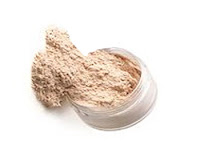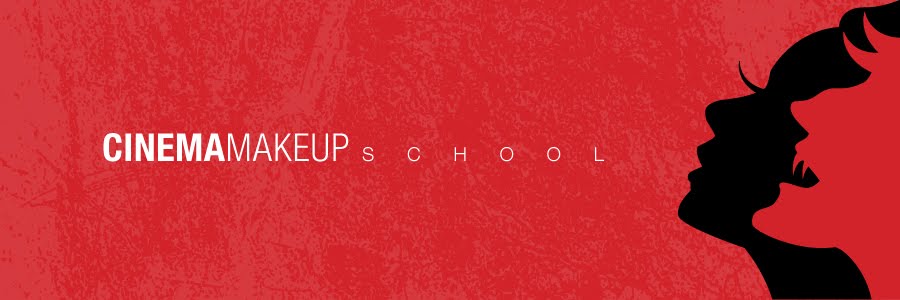1.) Skin Tone - Stays the same unless you become tanner or paler. Skin tone is enhanced by: Foundation, Base, Concealer, Powder, Shading or Contouring.
2.) Accessories - Change with your wardrobe and include: Eyeshadow, Mascara, Blush and Lip Color.
A commonly asked question is, "What color should I wear?" Color is an accessory. If you are wearing a red shirt, find something with a red tone. If you are wearing purple, you'll want to find something with a mauve tone.
Which do I apply first, concealer or foundation?
Apply foundation and then concealer. By applying the foundation first, you see exactly where you still need more coverage. And as you apply the concealer, you will see if more or less is required.
How do I select the proper foundation shade for my skin?
The best place to test match your skin tone is on the chin and lower jaw area. To test a color, apply a small amount of foundation and feather out the blend. If the shade isn't quite right select the next shade up or down in tone. Expect that the foundation chosen in mid-summer may be too dark in mid-winter. The objective o foundation is to smooth and blend skin tone and color differences to a natural healthy look of natural skin. If it looks like a mask, (or feels that way) than too much has been applied. If you see no difference, you have applied too little. Remember foundation should help you look simply beautiful.
Sometimes I need a lot more coverage than my regular foundation can give me. What do you suggest I use?
When a great deal of coverage is needed in a specific area, don't apply heavy foundation to compensate. Use a concealer which should be applied easier, faster and with better results.
How do I find the right concealer?
Forget all the rules on concealer: green covers red, yellow covers red and brown, orange covers blue. This doesn't seem simple. Many companies have developed concealers that match the skin tone. They are formulated with a great deal of pigment so a thin application will actually conceal or hide the various undertones. This makes the choice and application much easier and the results flawless. Simply pick the shade that best matches the skin tone at the lower eyelid.
Application Tip: Apply concealer with a small brush. This way you can apply the product in the same exact size and shape necessary. If you use your finger, the size of the area you cover is dependent on the size of your finger.
Where can I apply concealer for the best coverage?
Under the eyes where discoloration is prominent. Between the inner eye and the nose often shows discoloration that can pinch the nose area, making one look tired, and can give the appearance of changing the eyelid shape. At the outer eye, where the upper and lower lid join, there is often a dark line of discoloration that draws down that can be concealed. You can also apply concealer to cover broken blood vessels and skin irregularities.
What is translucent powder used for?
 Translucent powders are designed to "set" makeup. The powder absorbs the oil or moisture in the makeup to create a dry surface on the skin. Translucent powders should not add color to your makeup. (Powders that incorporate foundations are used for coverage as a foundation and are not recommended for setting makeup.)
Translucent powders are designed to "set" makeup. The powder absorbs the oil or moisture in the makeup to create a dry surface on the skin. Translucent powders should not add color to your makeup. (Powders that incorporate foundations are used for coverage as a foundation and are not recommended for setting makeup.)Application Tip: A powder puff or large brush may be used to apply the powder as well as brush away any excess.
I tend to crease under the eyes when I apply powder, what am I doing wrong?
You should smooth the area underneath the eyes before powdering to insure your application is flawless before setting. If you have applied concealer thinly under the eyes, you will avoid creases. Powder does not create a crease or accentuate lines- thick makeup on the thin tissue under the eye does.
Various companies have perfected shading or contouring powders. These brush on easily with a blush brush and are almost fool-proof. If the shading is applied too heavy, you can minimize it with a little translucent powder.
I always hear about "shading" and "contouring" but what exactly are they used for?
Most makeup artists use shading or contouring to minimize fullness under the jaw area, emphasize the cheek bones, or give the appearance of narrowing the width of the nose.
How do I choose the perfect lip color?
Observe yourself but remember color is an accessory. What color is your wardrobe and what color are you currently wearing? Select three colors in the same range - light, medium and dark. Try on each color and pick the one you feel most comfortable wearing.
I could really use some lipstick tips - any suggestions?
That depends on what you're going for. For a natural lip look- cover the entire lip area with a pencil close to your lips natural shade. for intensified color - apply pencil over the entire lip area followed by a coordinating lipstick For fuller lips- outline lips slightly outside the lip line and fill in with lipstick. In most cases you will want a pencil slightly darker than the lipstick. (Remember the lips have more color then the surrounding skin. Therefore the darker pencil is necessary to compensate). To correct uneven lips - simply even the lips with the lip pencil and fill with lipstick. To minimize lipstick bleeding- outline the lips with a broad line using a lip pencil. Powder the pencil line. Fill in the lips with lipstick, but carry the lipstick just up to the lip pencil. This helps set a barrier for the more emollient lipstick.
How do I know which shade of blush to wear?
Once the lipstick and lip pencil have been selected, simply choose a blush in the same color family.
Leonard Engelman
Director of Education, Cinema Makeup School
Makeup Artist and Hairstylist Branch Governor for the Academy of Motion Picture Arts and Sciences.













